There is a mystery on the streets of our neighborhood. It involves stop signs.
I thought I’d discussed stop signs in a posting in some prior year, but couldn’t find it, so first, let’s talk a little about them (if you don’t want to nerd out on this topic, skip down to the pictures below).
Throughout most of the world, a red octagonal sign is an indication for traffic to stop. This was codified by the Vienna Convention on Road Signs and Signals in 1968, expanding on a previous set of Geneva Protocol on Road Signs and Signals from 1949 and 1931. The protocol also allows an inverted red triangle or triangle outline (used in a few places like Japan and Cuba, respectively) in an optional circle.
Naturally, the United States doesn’t adhere to the Vienna Convention, instead relying on the US Federal Highway Administration’s Manual on Uniform Traffic Control Devices, but since that also stipulates a red octagonal stop sign (see section 2B.04 for the particulars), that falls outside of the discussion here.
The Vienna Convention relies more on semiotics and symbols than text, whereas the MUTCD relies a lot on text (like “STOP” in the center of the red octagon). Many parts of the world use a combination of the Vienna Convention and the MUTCD for figuring out their signage. Regardless, the red octagon is one of the most recognizable symbols in the world.
Interestingly, throughout Europe (including France), the stop signs contain the English word “STOP” in the center. As is obvious from the picture above, that doesn’t fly in Quebec. No, to preserve the sanctity of the language, the stop signs read “ARRÊT” in Quebec.
If I haven’t completely bored you to tears yet and you want even more, the Wikipedia page on Stop Signs has a great gallery of what they look like in different countries and regions throughout the world.
Now, on to the mystery!
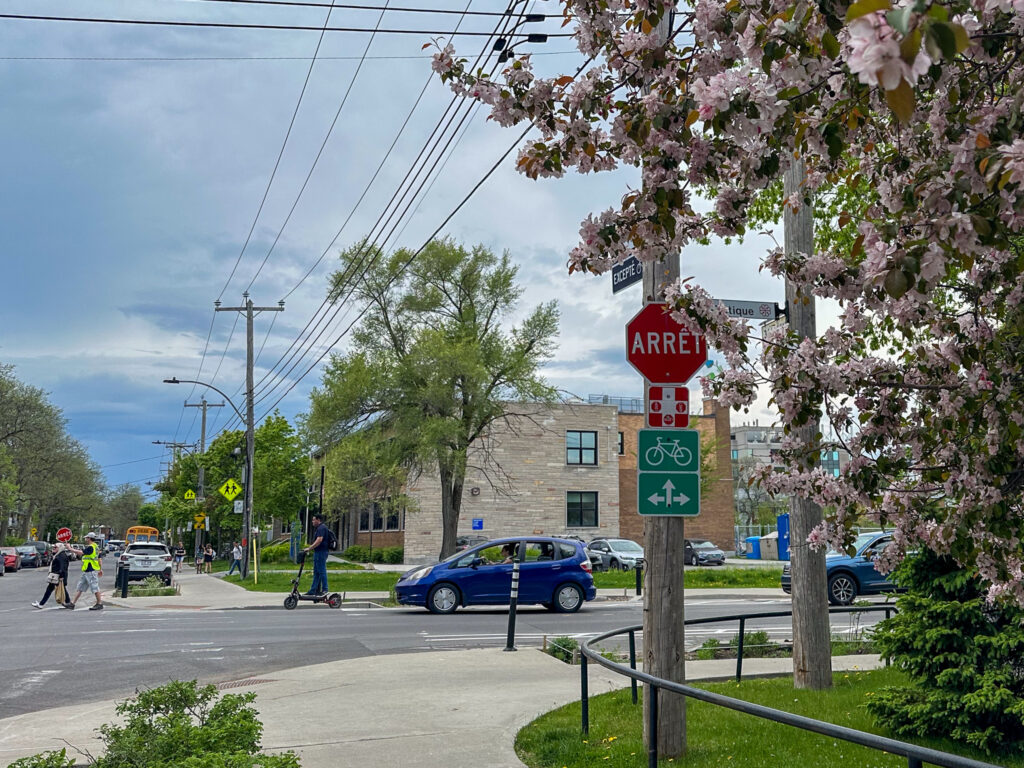
The picture above shows a typical stop sign. The stop sign on the telephone pole has a helpful indicator below showing which traffic directions stop (we’re on a one-way street here, so there would not be vehicles approaching or stopping from the opposite direction).
You can see the position of the stop sign is about 10 feet/3m up, where it should be clearly visible from a vehicle. You can also see a stop sign positioned about 5 feet/1.5m high in the hand of a crossing guard.
All very normal.
Now, our mystery. We go a long block from this intersection down to Beaubien, and what do we see?
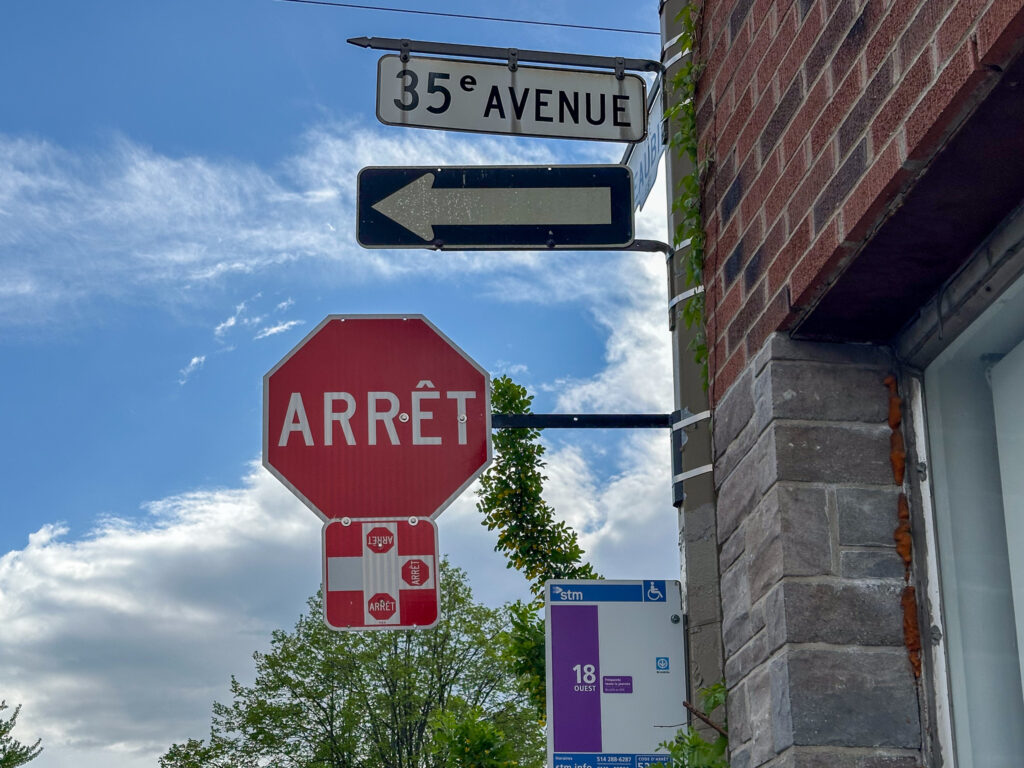
Yup, another sort of typical stop sign, this time mounted on the side of a building. But wait! What in heaven’s name is this?
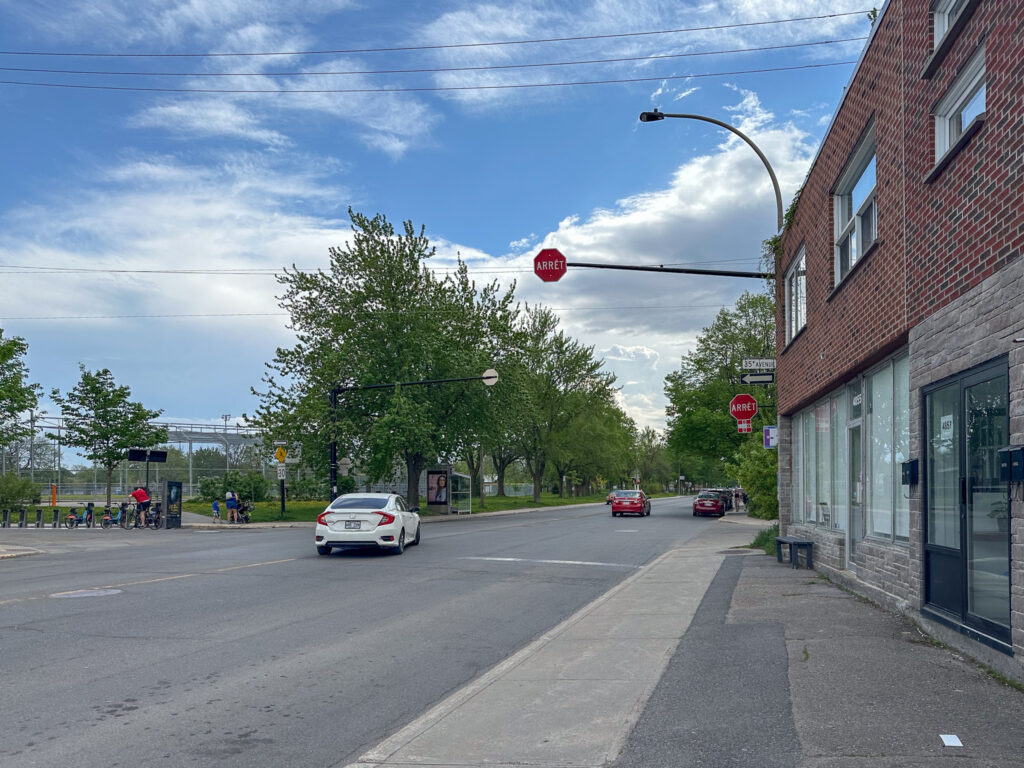
There, high in the sky, is another sign. And this doesn’t happen ay every intersection, but it does on several.
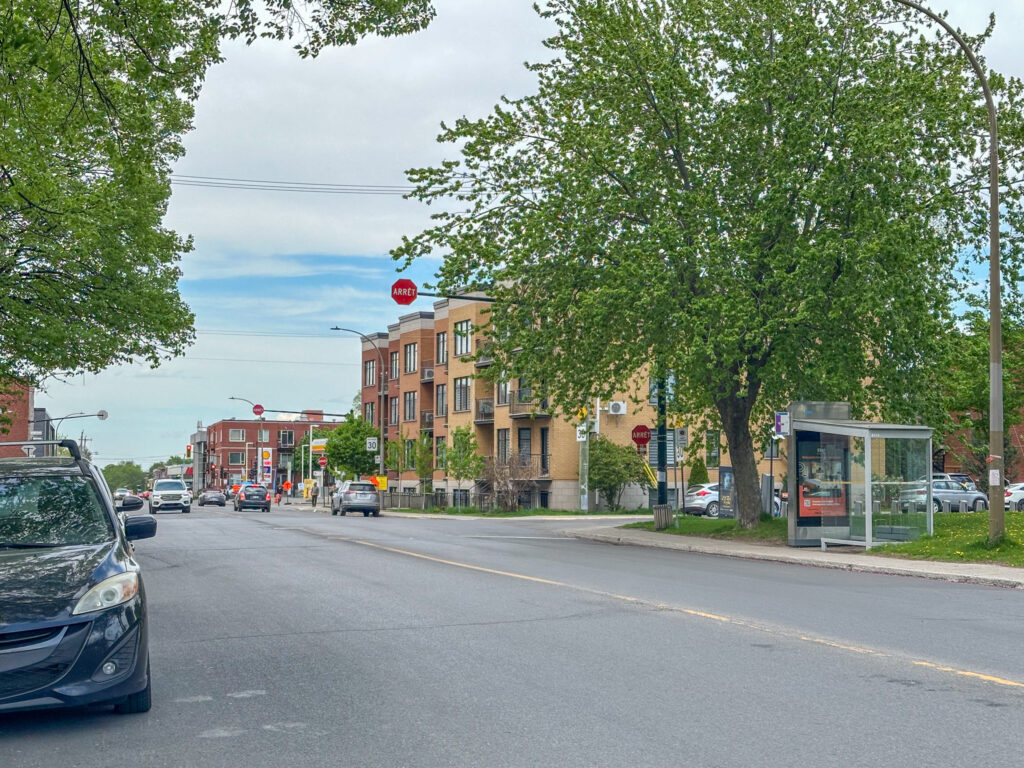
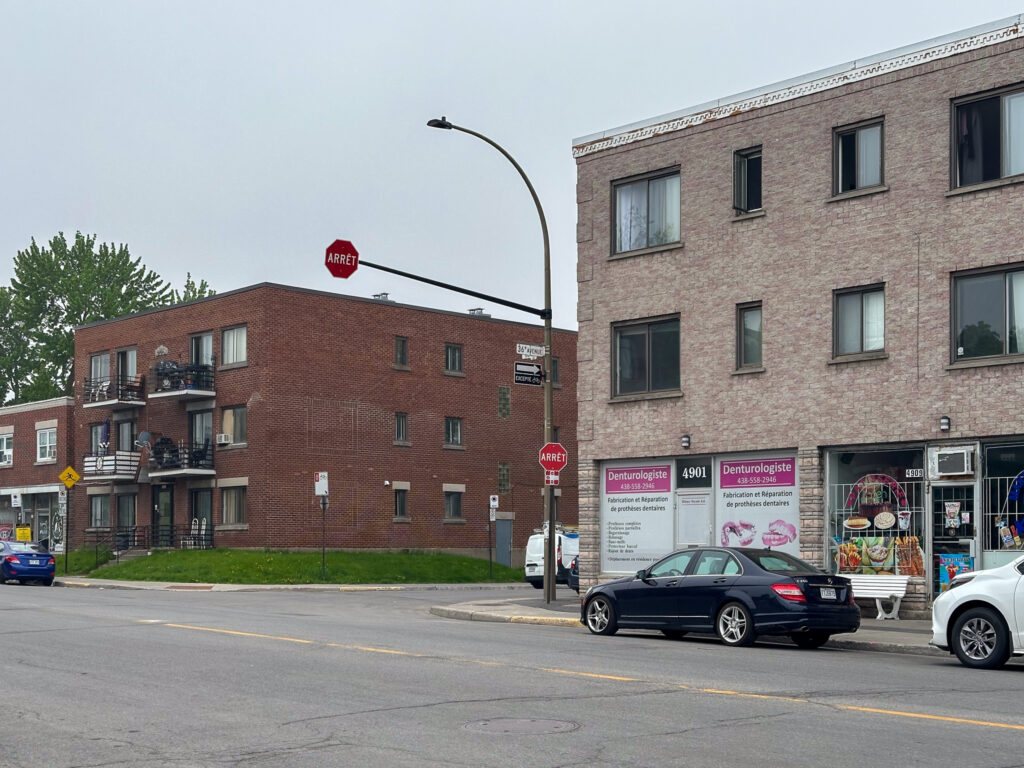
Why these few signs are elevated, I’ve been unable to determine. I have noticed that cars routinely ignore the signs altogether and just blow on through these intersections.
Web searches only yielded an article on the adding of stop signs to this neighborhood from 2019, and those were quite ordinary stop signs.
I’ll update this posting if Madame Marple gets back to me with the explanation.

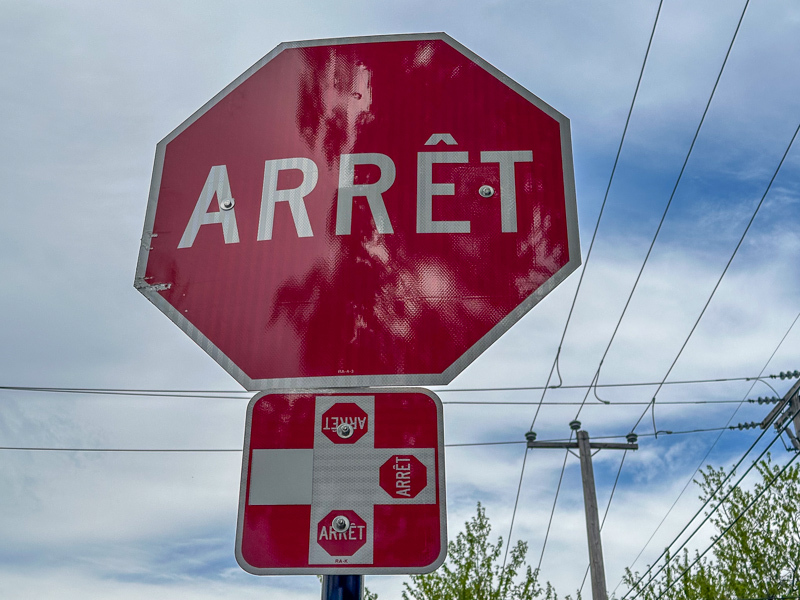
3 replies on “The Incredibly Dull Case of the Lofty Stop Signs”
Is there a lot of truck traffic on the streets with the lofty signs? Since I drive a quite small car, I often have difficulty seeing street-level signs over trucks, but I could see those tall signs from a distance and identify them well enough by shape shape/color to know I’m coming up to an intersection where I’ll need to stop.
It’s a good theory, and supports Manon’s theory that it’s related to buses and bus stops. There are bus stops at two of the three nearby intersections that feature these elevated signs.
I loved learning about international stop signs, and seeing this mysterious way up high sign.
The sign below the stop sign which also tells you what sides of the street also have stops is so considerate!
Looking forward to hearing about the why when yall find out!